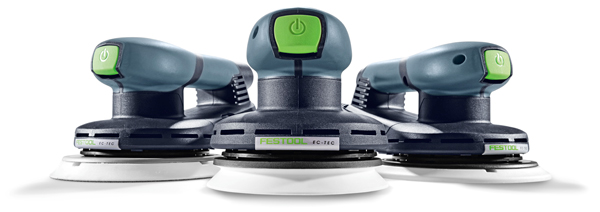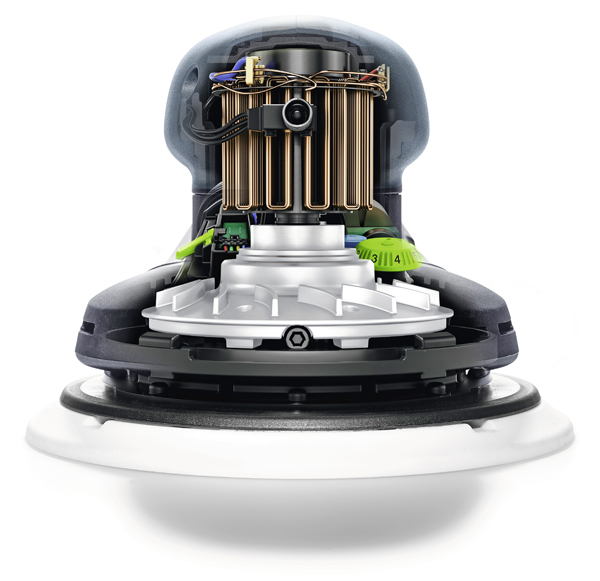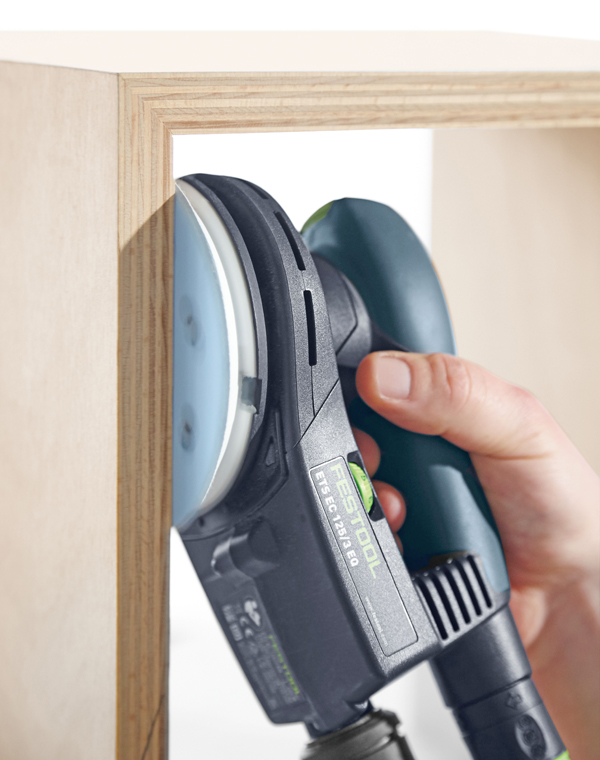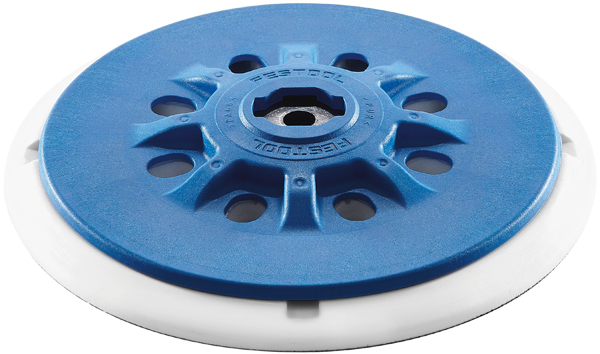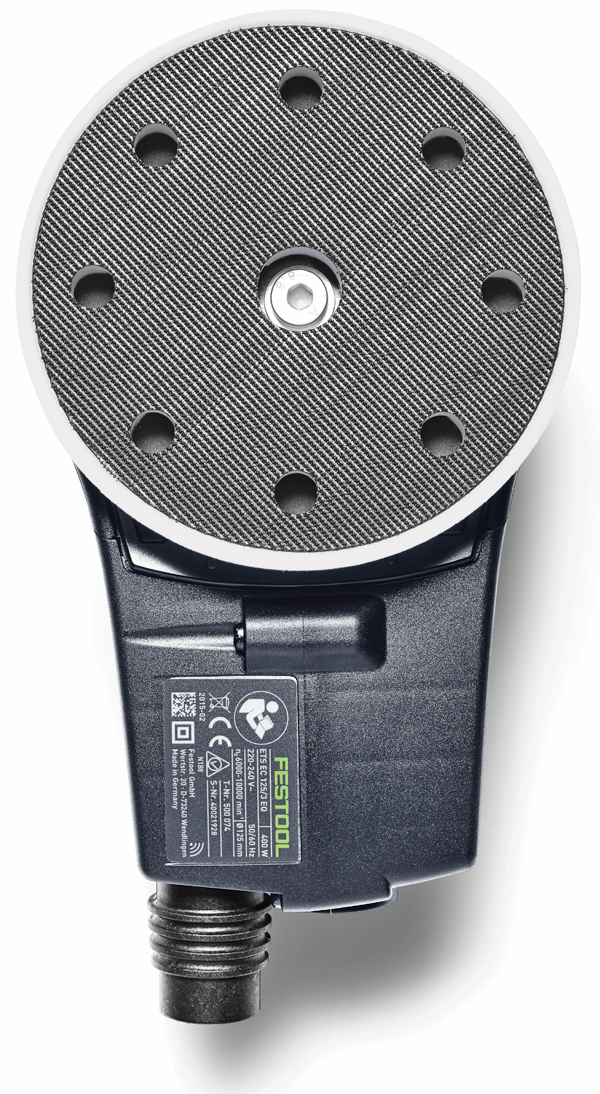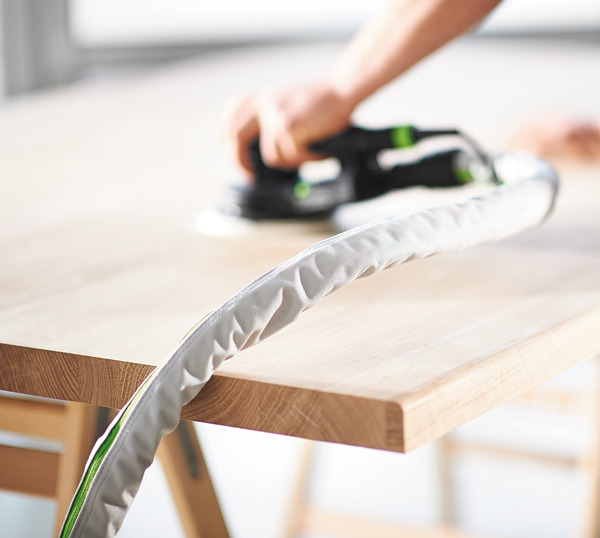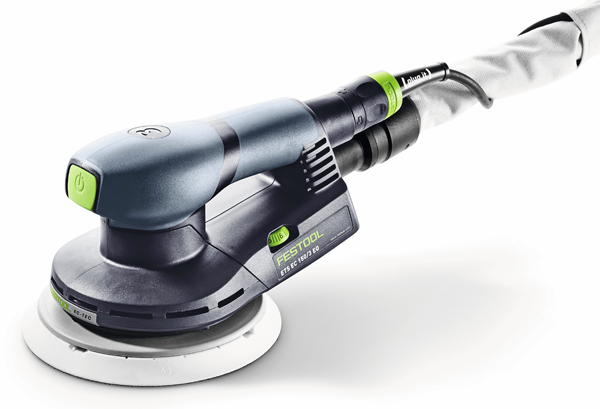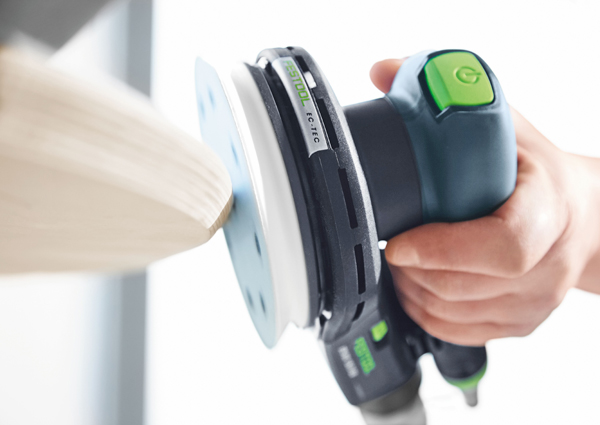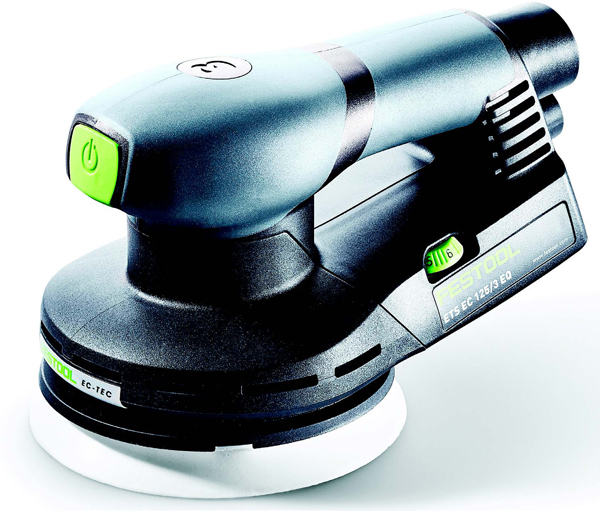
How happy are you with your random orbit (R.O.) sander? At times, I’m not thrilled with mine. Sanding feels like it takes too long to achieve a final finish smoothness. The screw-on fabric dust canister leaks, but my shop vacuum hose isn’t a great option either. The hose often pulls loose, or its ribs get caught on the edges and corners of my workpieces and interrupt the process. The pad brake works slowly to bring the tool to a stop, and abrasives seem to wear out quickly. Then, when I’m finished with a lengthy sanding session, I can still feel the tingle of the machine’s vibration in my hand and wrist.
Can you relate? If you’re nodding in agreement, I’ll bet you wish for more from your random orbit sander than you’re getting. But, is there really anything new under the sun when it comes to this shop mainstay?
Festool’s answer, with the launch of three new ETS EC sanders this month, is definitely “yes.” A slew of state-of-the-art features, reports Rick Bush, Festool’s marketing project manager, have the potential to set the ETS EC series in a whole different league from what we’ve come to expect in power sanding.
Central to the engineering of this trio of sanders is Festool’s EC-TEC® Brushless Motor. Most random orbit sanders have traditional electric motors with commutators that make contact with carbon brushes. The brushes wear out over time, and they create friction when the motor spins, which reduces efficiency and builds up heat. Brushless motors use electronics to control the motor, and they have no carbon brushes, so they operate more efficiently. The design also makes the motor more compact.
Bush says Festool has been expanding brushless motor technology into its cordless tool line since the early 2000s, when it launched the C12 cordless drill. Now, its entire 18-volt tool lineup includes brushless motors. Several years ago, Festool crossed over into corded tools with brushless motors when it launched the Carvex Jigsaw. Now, these ETS EC sanders extend the options further still.
“Prolonged runtimes is the reason a brushless motor makes sense for a sander,” Bush says. “They provide a sander that is longer-lasting, lower in profile and more powerful.”
The new ETS EC sanders come in three variable-speed versions: 125/3 EQ, with a 5-in. pad and 3mm (1/8-in.) stroke; 150/3 EQ, with 6-in. pad and 3mm stroke; and 150/5 EQ, with a 5mm stroke.
Even if a sander’s radical motor is built to outlast its more budget-priced competition, the advantage won’t matter if the tool is uncomfortable to use. Festool is confident the new ETS EC machines will be pleasing to the arm by first affording better control. The brushless motor allows the body of the tool to be squatter than comparable corded sanders. They stand 120 mm tall. Bush says those who are used to air sanders will appreciate the similarity here. “These sanders have a shorter lever arm, which puts the user more in touch with the surface for greater control and feedback. That leads to better sanding results.”
Festool’s vibration dampening feature should feel like a big improvement here, as well. Typically, a random orbit sander has a mechanical balancing system that depends primarily on the pad. Vibration increases as the pad wears or if it becomes misaligned. But, on the new ETS EC sanders, vibration dampening is mainly controlled electronically, not by the pad. “This provides an active method to control vibration by constantly monitoring and making adjustments as the sander runs to ensure a smooth performance with less fatigue,” Bush explains.
There are other new user-friendly features, too. For one, the sanders employ a carbide pad-braking system. What does that mean? Well, Bush says once the sander is switched off, the time required for the machine to come to full stop “is nearly instantaneous … It’s the fastest acting design we’ve ever offered.”
That translates to no more waiting for the machine to spin down so you can switch grits or park the tool on the bench. And, a better pad brake should also help to reduce marring if the machine isn’t lifted off of a workpiece when it’s powered down.
Dust extraction improvements will help keep your workspace and lungs cleaner, as well, with a new ETS EC sander. The sanders incorporate Festool’s “Jetstream” dust extraction provision. It amounts to better air circulation through the pad to avoid a vacuum effect that traps dust instead of drawing it up and away. “As extraction is applied to the pad,” Bush adds, “the air that is drawn not only pulls dust through the holes but also air from a supply channel through the center. This creates a circular effect that moves air and dust more effectively.”
The new sanders will even alert you abruptly if the dust extractor hose becomes disconnected. With the extraction connection feature turned on (the user can decide to activate or deactivate it), the sander will shut down, beep and vibrate if the hose slips off. That way, you won’t inadvertently create a cloud of dust and not know it’s happening. The feature is aimed for commercial environments where dust extraction may be a constant requirement.
Festool has even updated the hose you could attach to one of these new random-orbits, or other Festool tools. The latest hoses (sold separately) are enshrouded inside an anti-static sleeve, along with a Plug It Cord for powering the tool. Available in 3.5- or 10-meter lengths, the sleeved hose should prevent binding or catching on workpiece or workbench edges. It also reduces two “tails” coming from the tool into one, to prevent tangles.
Those accustomed to air-driven sanders will appreciate the On/Off switch design, too. Pneumatic sanders have “dummy” switches that require the switch to be constantly gripped in order to keep the sander running. It limits the hand-grip options. The ETS EC machines have a rubberized electronic switch, like other corded sanders, but it’s flush-mounted. So, you can grip the sander any way you prefer. The switch is also designed to remain turned off until activated again if power is suddenly lost and then restored.
We should also expect more mileage from abrasives on these machines. That’s due to Festool’s modified hook-and-loop design on the sander pads that “aggressively” engages the discs, Bush says. “Reducing movement between the abrasive and pad reduces heat gain from friction and prolongs pad and abrasive life.”
In a nutshell, Bush is confident the new ETS EC sanders will appeal to those looking for the performance of a heavy-duty production air sander, in terms of superior durability, longevity and improved handling. And, while the price of these machines will exceed other corded random-orbit sanders ($385 or $485), they won’t require a costly air system to operate or maintain. Just plug in and go to work.
For serious small shop hobbyists looking for a premium R.O. with pro-quality features, ETS EC will offer a level of performance and features no other corded sander can match.
“These sanders may be everything (woodworkers) have been looking for in a sander and haven’t yet found,” Bush says.
Learn more about Festool’s trio of brushless random orbit sanders by clicking here.
